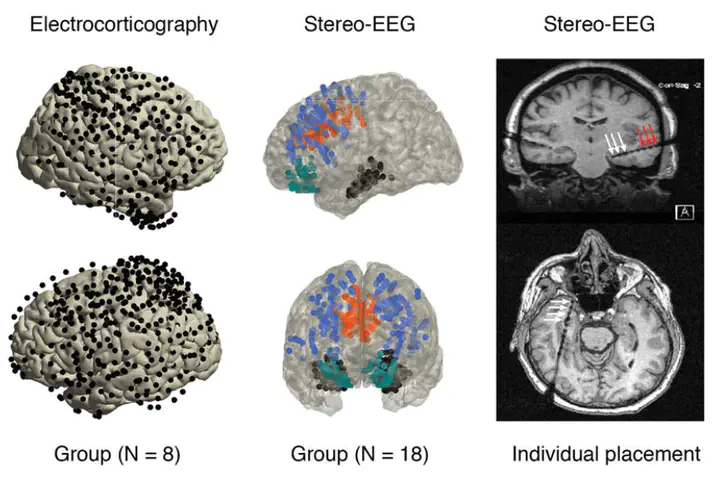
Abstract
The neurophysiological mechanisms that enable cognitive functions are typically studied noninvasively in humans using scalp magnetic resonance imaging (MRI) and magneto- or electroencephalography (M/EEG) or invasively in rodents or nonhuman primates. Intracranial EEG as recorded in pharmacoresistant epilepsy patients who undergo evaluation for resective epilepsy surgery provides a unique approach to bridge the gap between noninvasive in humans and invasive studies in rodents and nonhuman primates. In recent years, iEEG has provided important insights into the functional architecture of human cognitive systems. Here, the principles of successfully conducting intracranial experiments in humans are discussed, with a particular focus on implementing recording setups and analyzing the data. The high spatiotemporal resolution of iEEG provides a number of opportunities and challenges, which are outlined alongside potential solutions. Collectively, intracranial cognitive neurophysiology is a rapidly progressing field providing key insights into the organization of human cognitive systems.